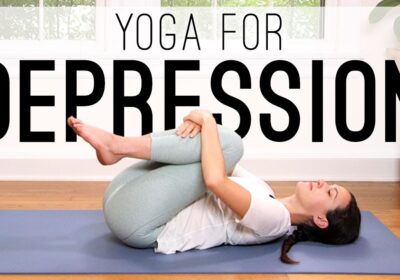Yoga for Heart Health

Summary:
- Asana, pranayama, meditation, chanting and relaxation are the most important practices for cardiac health.
- Conscious relaxation makes yoga a safer option for patients with cardiac health issues.
- Yoga practices such as hand-stand, head-stand, shoulder stand, kumbhaka, bhastrika are either to be avoided or to be followed strictly under supervision for patients with cardiac health issues.
Yoga can be a beneficial practice for heart health when done regularly and in conjunction with a healthy lifestyle. Here are some yoga practices that are particularly beneficial for heart health:
Relaxation: Relaxation though not generally recognised or appreciated for its benefits remains one of the most important practices in yoga. It is equally important for the health of the heart. Some examples of practices are shavasana (Corpse pose), yoga nidra, makarasana, progressive relaxation techniques. These relaxation practices help reduce stress and promote a calm mind, which is beneficial for heart health.
Asanas (Postures): Postures make the major component in yoga and the majority of postures are considered good for cardiac health. Though selection of asana varies significantly from one individual to another depending upon the fitness and morbidities. Some examples are bhujangasana (serpent pose), ardhachakrasana (half-wheel pose), ardhakatichakrasana (lateral arc), gomukhasana (cow face pose), vrukshasana (tree pose), vakrasana (twisted pose), setubandhasana (bridge pose), ustrasna (camel pose), matsyasana (fish pose) and trikonasana (triangle pose). These poses are generally safe even for patients with cardiac ailments, though supervision is mandatory while implementing yoga for patients with cardiac health issues.
Surya Namaskara (Sun Salutation): Surya Namaskara is a practice in yogic tradition which is closest to modern day exercises. Akin to exercise, it is a good practice for maintaining cardiac health. Difficulty level can in general be considered higher in comparison to simple asana practices. Hence, surya namaskara may not be safe for patients with cardiac health issues like coronary artery disease, cardiomyopathy and cardiac failure. Though, it can still be practiced depending on the severity of ailment and the available supervision.
Pranayama (Breathing Exercises): Techniques like deep breathing, anulom vilom (alternate nostril breathing), bhramari (bee breath), sitali (cooling pranayama), ujjayi, kapalabhati, abdominal breathing and bhastrika, all have potential benefits for cardiac health and can be used with or without modifications for various cardiac health conditions under supervision. In recent times, a lot of research has popped up about a pranayama based technique named coherent breathing for its cardiac benefits.
Meditation: Different meditation techniques including mindfulness are useful for cardiac health. These techniques help in calming down, reduce blood pressure and provide rejuvenation.
Chants: Different forms of chanting (Om chanting, Bhagavadgita chanting, Vishnusahsarnama, vedic chants, shanti mantra etc.) are useful for cardiac health and can be used where difficulty for pranayama and meditation techniques is observed. Religious preferences are to be observed while offering chanting practices.
While yoga can be highly beneficial for cardiac health when practiced mindfully and under the guidance of a qualified instructor, there are certain yoga practices that may be contraindicated for individuals with specific heart conditions or who are at risk for heart problems. Some examples are:
Intense Hot Yoga (Bikram Yoga): Hot yoga classes are conducted in a room heated to high temperatures, which can place additional stress on the cardiovascular system. Individuals with heart conditions, high blood pressure, or a history of heat-related issues should avoid hot yoga.
Advanced Inversions: Poses like handstand, headstand (sirsasana) and shoulderstand (sarvangasana) can put a significant strain on the heart and should be avoided by individuals with uncontrolled high blood pressure, heart disease, or certain heart conditions. Modified versions or alternatives should be considered under the guidance of an experienced instructor.
Holding Breath (Kumbhaka): Pranayama techniques involving breath retention, such as breath-holding after inhalation or exhalation, can increase blood pressure temporarily and should be avoided by those with high blood pressure or heart conditions. It’s crucial to choose pranayama practices that emphasize slow, controlled, and even breathing.
Extreme Twists and Backbends: Deep, extreme twists and backbends can compress the chest and put pressure on the heart. Individuals with heart conditions should practice gentler variations or avoid such poses altogether.
Cleansing Techniques: Certain cleansing techniques may not be safe for patients with cardiac conditions. These include vamana dhauti, laghu shankha prakshalana etc. All advanced cleansing techniques like danda dhauti etc. are not feasible for patients with cardiac conditions and recommended only for long term yoga practitioners.
There are various cardiovascular benefits observed with the practice of yoga. Here are some ways in which yoga can promote heart health:
Stress Reduction: Yoga incorporates relaxation techniques such as deep breathing and meditation, which can help lower stress levels. Chronic stress is a risk factor for heart disease, so managing stress is crucial for heart health.
Improved Heart Rate Variability (HRV): Heart rate variability is the variation in time intervals between successive heartbeats. Higher HRV is generally associated with better cardiac health and overall resilience to stress. Yoga has been shown to improve HRV, indicating a potential positive impact on the autonomic nervous system and cardiovascular function.
Enhanced Vagal Tone: Pranayama stimulates the vagus nerve, which plays a crucial role in regulating heart rate and maintaining cardiovascular stability. Enhanced vagal tone can result in a healthier heart rate response to stressors.
Reduced Inflammation: Chronic inflammation is a contributing factor to heart disease. All components of yoga may help reduce inflammation by calming the body’s stress response and promoting relaxation.
Improved Oxygenation: By consciously controlling the breath, yoga can enhance oxygenation of the blood. Well-oxygenated blood is essential for the overall functioning of the cardiovascular system.
Blood Pressure Regulation: Certain yoga poses and breathing exercises can help reduce blood pressure. For example, practicing slow, deep diaphragmatic breathing can have a calming effect and help regulate blood pressure.
Improving Flexibility and Circulation: Yoga poses involve stretching and lengthening muscles, which can improve circulation and reduce the risk of blood clots. Better circulation is essential for maintaining a healthy heart.
Enhancing Cardiovascular Fitness: While yoga is not an intense cardiovascular exercise like running or cycling, it can still help improve heart health by increasing endurance and promoting a steady heart rate. Practices like Vinyasa or Surya namaskara can be more physically demanding and beneficial for cardiovascular fitness.
Weight Management: Maintaining a healthy weight is crucial for heart health. Yoga helps in weight management by both calorie burning as well as improved food habits.
Mind-Body Connection: Yoga emphasizes the mind-body connection, helping individuals become more aware of their bodies and how they respond to stress. This awareness can lead to healthier lifestyle choices and better heart health.
Improved Sleep: Regular yoga practice can lead to better sleep quality, which is important for overall health and heart health. Poor sleep can contribute to heart problems.
Benefits of yoga for cardiovascular health are well documented in various researches conducted across the globe. Though yoga is easy to practice, supervision becomes mandatory with various cardiac conditions.
Related Posts

Yoga for Anxiety Disorders
Summary: Yoga can be used as both an add-on treatment and as a monotherapy for…

Yoga for Back pain
Summary: Yoga can be used as both an add-on treatment and as a monotherapy for…

Yoga for Depression
Summary: Yoga can be used as both an add-on treatment and as a monotherapy for…

Leave a Reply